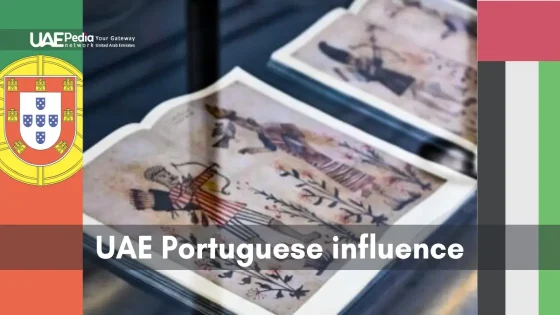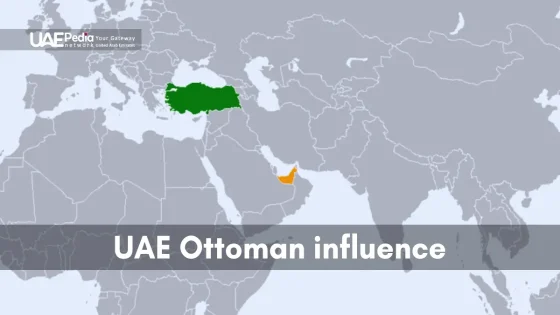Did you know the United Arab Emirates has a rich history with Portuguese influence? This story goes back centuries, filled with sea adventures, cultural sharing, and lasting Footprint and Effects. Let’s explore how Portuguese explorers shaped the Persian Gulf and the UAE’s coastlines. Are you ready to learn about this exciting part of history?
The UAE’s story with Portugal started in the 16th century. During this time, Portuguese sailors looked for new trade paths and lands. Their arrival began a significant period in UAE history, affecting its buildings, economy, and culture.
We’ll see how the Portuguese changed the UAE’s coastlines. They built strong fortresses and trading posts. But why did these brave explorers come to the UAE? And how did their actions shape the UAE we see today?
Early Maritime Presence in the Arabian Gulf
The Arabian Gulf has always been a key spot for trade. It connects Asia, Africa, and Europe. The Portuguese played a big role in the UAE’s history by using these waters.
Explorers and traders from all over were drawn to the UAE’s waters. They saw its strategic value.
Pre-Portuguese Trade Routes
Before the Portuguese came, the Arabian Peninsula was full of life. It was a major center for sea trade. Goods and cultures were exchanged across the Gulf.
These early trade paths helped set the stage for later adventures and conquests.
Strategic Importance of UAE Waters
The UAE’s coast played a big role in trade. Ports like Julfar, now Ras Al Khaimah, were very important. They brought in a lot of money.
Julfar made more money than almost any other port in the Kingdom of Hormuz. This shows how valuable it was.
Initial Portuguese Expeditions
The Portuguese brought new ways of exploring the UAE’s waters. Afonso de Albuquerque led them in the early 16th century. They stayed in Ras Al Khaimah for about eleven years.
They had a big impact on local trade and defense. Their influence would shape the Gulf for many years.
Portuguese Military Expansion in UAE Waters

The Portuguese military expansion in UAE waters was a big part of UAE’s colonial history. Vasco da Gama’s visit to India in 1498 made Portugal look at the Arabian Gulf. They saw its strategic value and used aggressive tactics to protect their interests.
Building forts in UAE was key to their rule. These forts guarded trade paths and showed their power over local groups. Places like Khor Fakkan and Dibba got big Portuguese forts. These were built to fight off attacks and keep control over key coastal spots.
Portugal used a lot of naval patrols in UAE. Their ships worked to keep sea paths safe and fight off other European and local threats. This naval power helped them control sea trade and enforce their economic goals in the area.
| Year | Event | Impact on UAE |
|---|---|---|
| 1498 | Vasco da Gama arrives in India | Starts Portuguese interest in Arabian Gulf |
| 1507 | Portuguese invasion of Muscat | They take over the whole coast |
| 1650 | Ya’rubid dynasty expels Portuguese | Portuguese lose Omani coast control |
The Portuguese colonial era deeply affected UAE’s history. Their military actions shaped the region’s politics and economy for many years. Today, we can still see their forts and their lasting effect on sea traditions.
UAE Portuguese Influence: Colonial Architecture and Fortifications
The Portuguese architectural influences in UAE show the rich history of the UAE. These buildings along the UAE’s coast tell us about West Asia’s colonial past. The Portuguese left a lasting mark on the region through their military and trade.
Doba Fortress in Dibba Al-Hisn
The Doba Fortress in Dibba Al-Hisn is a key example of Portuguese architecture in the UAE. It shows how important the Portuguese thought controlling coastal areas was. The fortress had thick walls and watchtowers to defend against invaders.
Coastal Defense Systems
The Portuguese built strong coastal defenses along the UAE’s shore. They built watchtowers and trading posts to protect their interests. These defenses helped the Portuguese control the sea trade routes.
Archaeological Evidence of Portuguese Structures
Recent digs have found Portuguese buildings along the UAE coast. These finds give us a peek into Portuguese building styles and their reach in the area. Excavations have uncovered foundations, artifacts, and building parts that show the Portuguese impact on local building.
| Portuguese Structure | Location | Purpose |
|---|---|---|
| Doba Fortress | Dibba Al-Hisn | Military defense |
| Watchtowers | Coastal areas | Surveillance |
| Fortified trading posts | Key ports | Trade protection |
Maritime Trade and Economic Impact
The Portuguese had a big impact on trade in the UAE. They controlled important ports like Julfar and towns like Dibba and Khorfakkan since 1507. This helped start new trade paths.
Portuguese Trading Posts
Trade goods from Portugal flowed through key trading posts. These places connected the Arabian Peninsula to the world. They linked Europe, Asia, and Africa together.
Commercial Exchange Networks
The UAE was key in Portugal’s Maritime Silk Road. This road went from Goa in India to Indonesia. The UAE was a key stop in the middle.
Traders moved goods like spices, textiles, and metals. They helped connect the pearl market in the Gulf to the world.
Pearl Diving Industry Relations
Portuguese merchants worked closely with the pearl diving industry. This was a big part of the UAE’s economy. Their work helped link the Gulf’s pearl market to global trade.
| Year | Event | Impact on Trade |
|---|---|---|
| 1507 | Portuguese control key Gulf ports | Establishment of new trade routes |
| 1622 | Loss of Hormuz to Anglo-Persian forces | Decline in Portuguese trade dominance |
| 1633 | Ya’arabi forces recapture Julfar and Dibba | Shift in regional trade control |
| 1650 | Fall of Muscat, last Portuguese stronghold | End of Portuguese trade monopoly in Gulf |
Cultural Exchange and Social Dynamics
The Portuguese in the UAE started a cultural exchange that changed the area. This mix of European and local cultures changed language, food, and customs. Today, we can still see the effects of this exchange.
How the Portuguese interacted with UAE tribes was different. Some tribes traded, while others fought. These interactions made Middle Eastern History complex. They also mixed Portuguese and Emirati cultures, creating something new.
Now, the UAE celebrates its diverse culture. For example:
- The Jumeirah Mosque welcomes people of all faiths, helping them understand each other.
- Museums show items from the 1970s and 1980s, showing how fast the UAE grew.
- Cultural centers offer Emirati breakfasts, teaching about local traditions and history.
The UAE works hard to keep its culture alive while welcoming the world. The legacy of Portuguese and Emirati interactions still shapes the UAE today. It promotes openness and cultural exchange in the Middle East.
Portuguese Naval Strategies in the Persian Gulf
The Portuguese had a big impact on UAE’s defense systems. They shaped how the Persian Gulf was controlled by sea. Their naval plans were key to keeping control over trade paths and protecting their interests.
Fleet Operations
Portuguese ships were all over the Persian Gulf. They used small caravels and big galleons to watch the waters. These ships helped keep Portuguese interests safe and followed their sea rules.
Maritime Control Methods
The Portuguese used strict rules to control the sea. They made a system called the cartaz to check who could trade. This helped them control sea trade in the Persian Gulf.
Today, the Gulf Cooperation Council calls this area the Arabian Gulf.
Strategic Port Developments
The Portuguese built important ports along the coast. These places helped their ships and trade. Now, these areas are busy with people from all over.
In Dubai, Sharjah, and Ajman, many people live together. Indians, Pakistanis, and Emiratis make up a big part of the population. This shows how the area has always been a meeting place of cultures, thanks to the Portuguese.



















